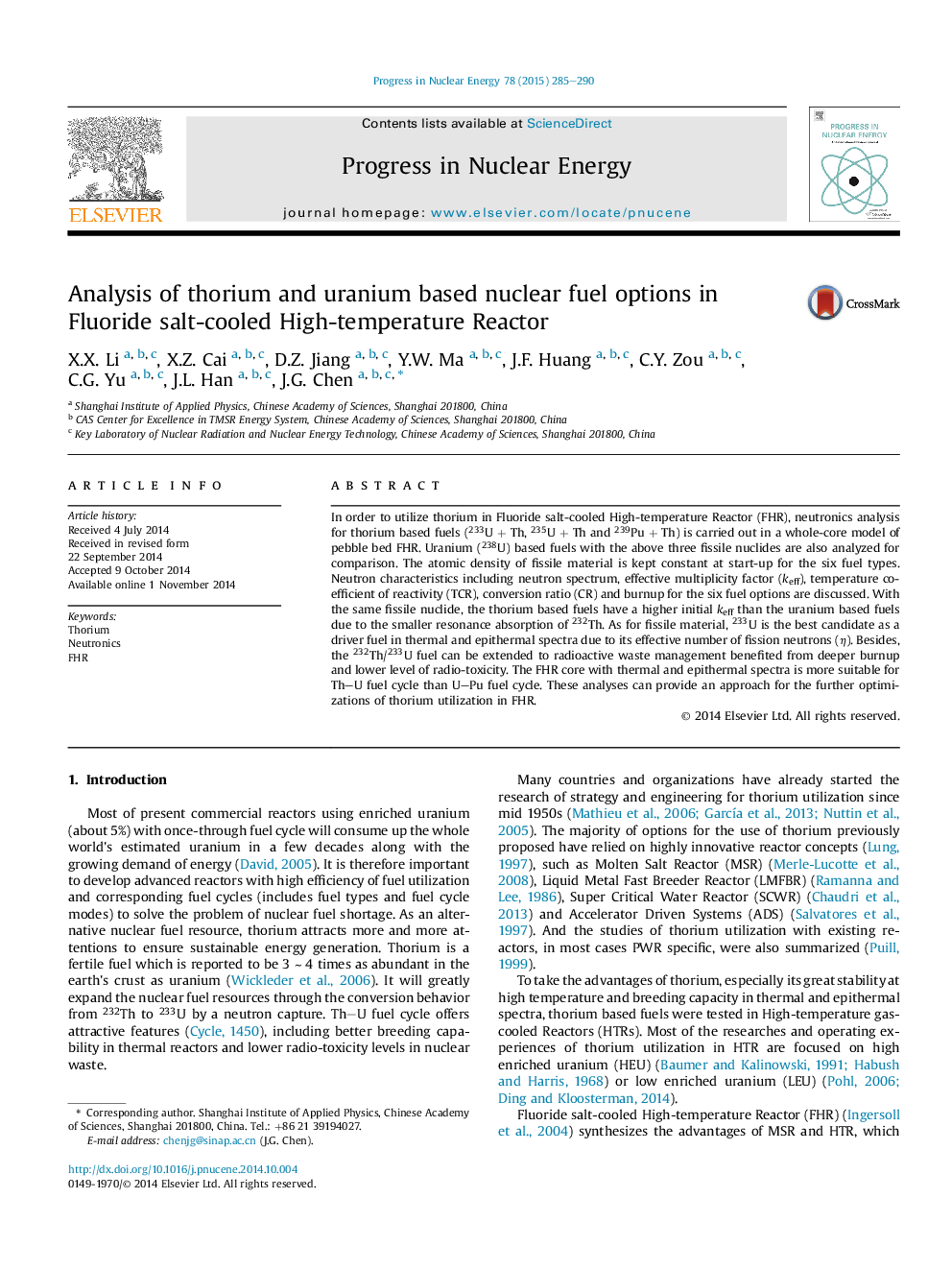| Article ID | Journal | Published Year | Pages | File Type |
|---|---|---|---|---|
| 1740633 | Progress in Nuclear Energy | 2015 | 6 Pages |
•The neutronics characteristics of thorium and uranium based fuels for FHR are analyzed.•Th2/U3 fuel may be a best option for FHR.•These analyses can provide optimization approaches for thorium utilization in FHR.
In order to utilize thorium in Fluoride salt-cooled High-temperature Reactor (FHR), neutronics analysis for thorium based fuels (U233 + Th, U235 + Th and P239u + Th) is carried out in a whole-core model of pebble bed FHR. Uranium (U238) based fuels with the above three fissile nuclides are also analyzed for comparison. The atomic density of fissile material is kept constant at start-up for the six fuel types. Neutron characteristics including neutron spectrum, effective multiplicity factor (keff), temperature coefficient of reactivity (TCR), conversion ratio (CR) and burnup for the six fuel options are discussed. With the same fissile nuclide, the thorium based fuels have a higher initial keff than the uranium based fuels due to the smaller resonance absorption of T232h. As for fissile material, U233 is the best candidate as a driver fuel in thermal and epithermal spectra due to its effective number of fission neutrons (η ). Besides, the T232h/U233 fuel can be extended to radioactive waste management benefited from deeper burnup and lower level of radio-toxicity. The FHR core with thermal and epithermal spectra is more suitable for Th–U fuel cycle than U–Pu fuel cycle. These analyses can provide an approach for the further optimizations of thorium utilization in FHR.
